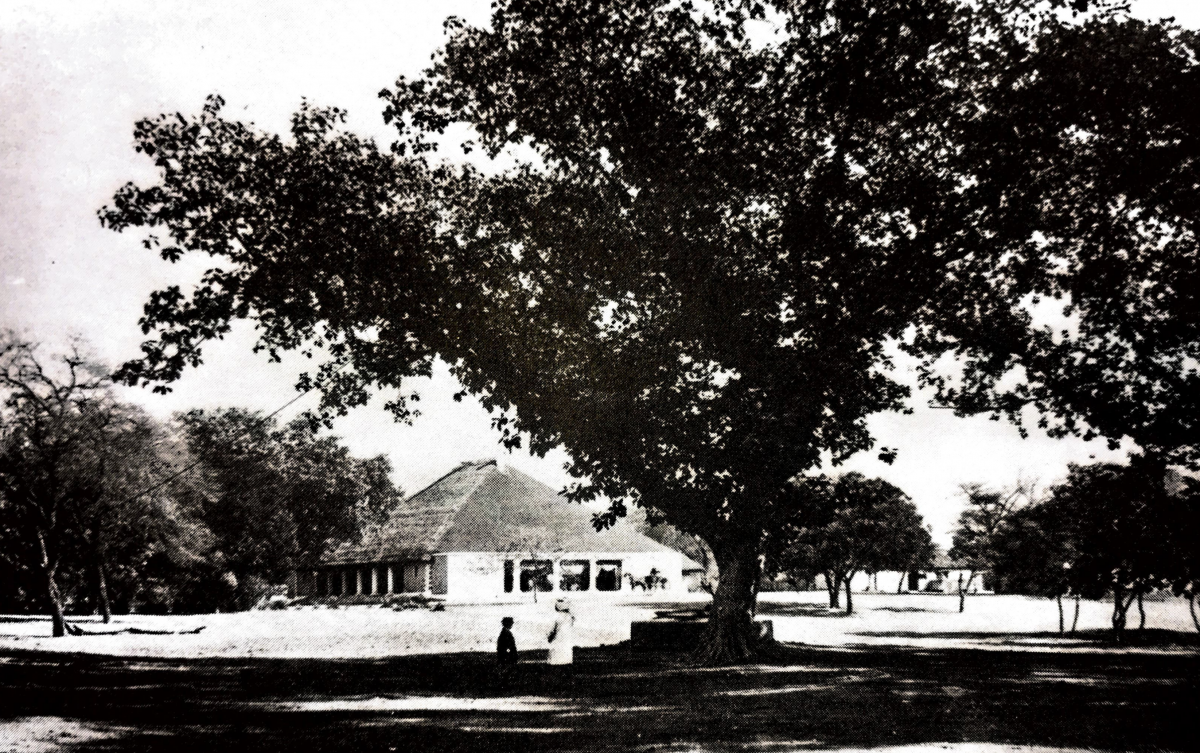If you were to conjure an image of a Victorian colonial lifestyle, perhaps imagine yourself as a British officer stationed in rural India, you may picture this typical scene; a leisurely afternoon spent on a shaded verandah, surrounded by a lush garden dutifully tended by household staff. This idyllic domestic scene of colonial life within a distant land is pervasive throughout western culture; the setting of a colonial bungalow, seems to capture the sentiment of the imperial era more than any other. Although the “bungalow” form and its attached ideology will in time dominate colonial settlements around the world, the term, form, and its use as a European residence find its origin in India. So pervasive was its use in India, that architectural historian Anthony King even states it as the principal building type of the British imperial period”.1
The European adaptation of both the bungalow form and term exemplifies the western trend of appropriation and eventual ownership of vernacular traditions of the land they colonize. By the end of this process the colonial bungalow began to be defined as a low, one-storey, spacious building, with a verandah forming an integral part of the structure.2 The bungalow was not the only vernacular tradition of domestic architecture in India, however, in its native form the bungalow possessed the qualities that furthered the political and social motivations of the colonial British power.
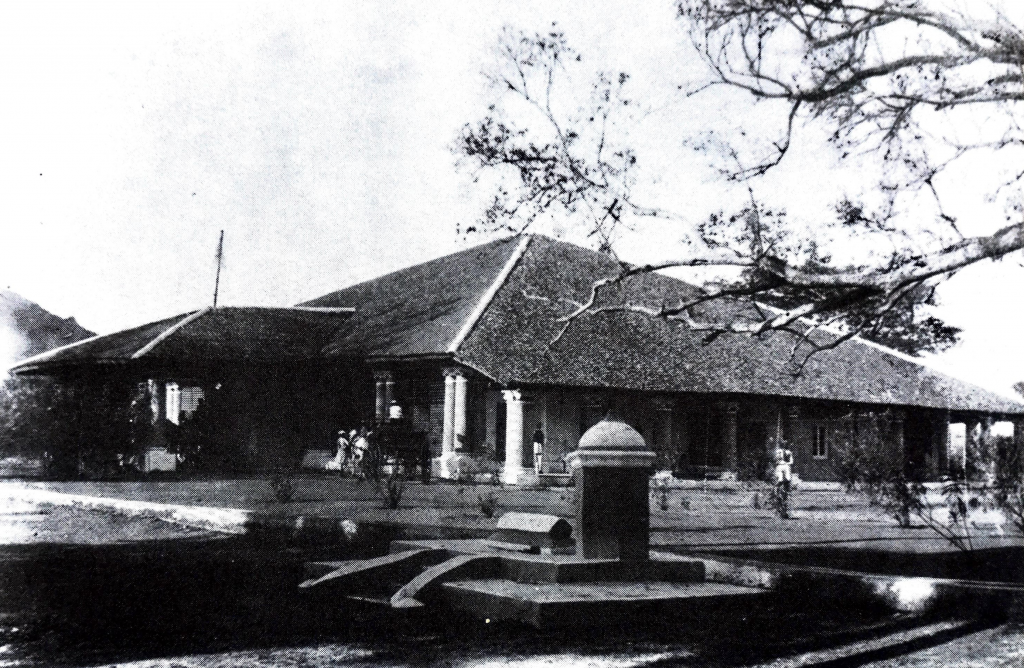
The Origin of Form
It is known that Europeans first began occupying Bengali thatched structures when Britain expanded trade operations into the region in 1711. By the arrival of Captain Thomas Williamson in 1778, the British had carried their use of such structures from Bengal to elsewhere in the interior of India. Williamson’s account clearly distinguishes the Algo-Indian bungalow from other architecture of European occupation within the region. He describes the structures as “having a substantial thatched pyramidal shaped roof, on one ground floor, built with sun-dried bricks.”3 Notably Williamson also notes that the exterior walls are secured by a “veranda.”4 Drawings of the Anglo-Indian bungalow of this era, depict a structure that is clearly influenced by local vernacular tradition.
The origins of the form that Williamson observed and what would become the basis of the “modern” colonial bungalow are contested. King suggests that one possible origin is that of a traditional Bengali peasant hut, conspicuously referred to as a “banggolo.”5 In 1810, traveler Francis Buchanan wrote of a traditional banggolo:
The style of edifice that is proper and peculiar to Bengal, consists of a hut with a pent roof constructed of two sloping sides which meet in a ridge forming a segment of a circle so that it has a resemblance to a boat when overturned … this kind of hut is said, from being peculiar to Bengal, is called by the native Banggolo.6
The native “banggolo” word certainly is the most similar to the modern term. However, a second type of native Bengali structure, called a “chauyari” hosts a roof much more similar to the one described by Williamson and various other accounts.7 A chauryari had a straight, either pyramidal or gabled shaped roof depending on the enclosure below it. The chauryari was missing a gallery or “veranda”. Some suggest that a veranda was an European addition to address climatic concerns however, there is evidence that a third type of traditional Bengali structure called an “ath-chala” possessed such a gallery. An ath-chala was of similar mud or bamboo construction but whose thatched roof projected beyond the walls of the hut forming a shaded perimeter, commonly supported at each corner by posts.8
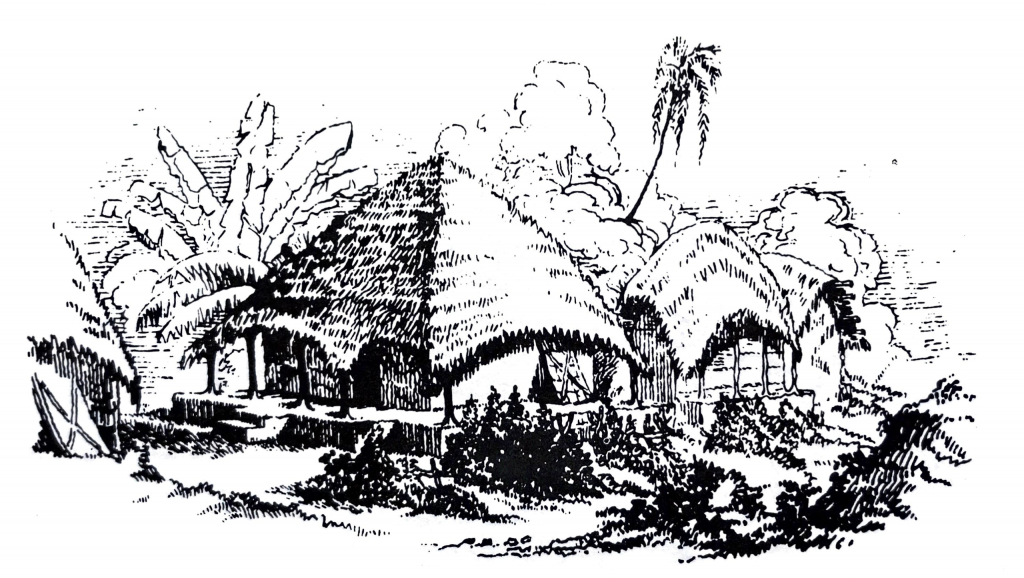
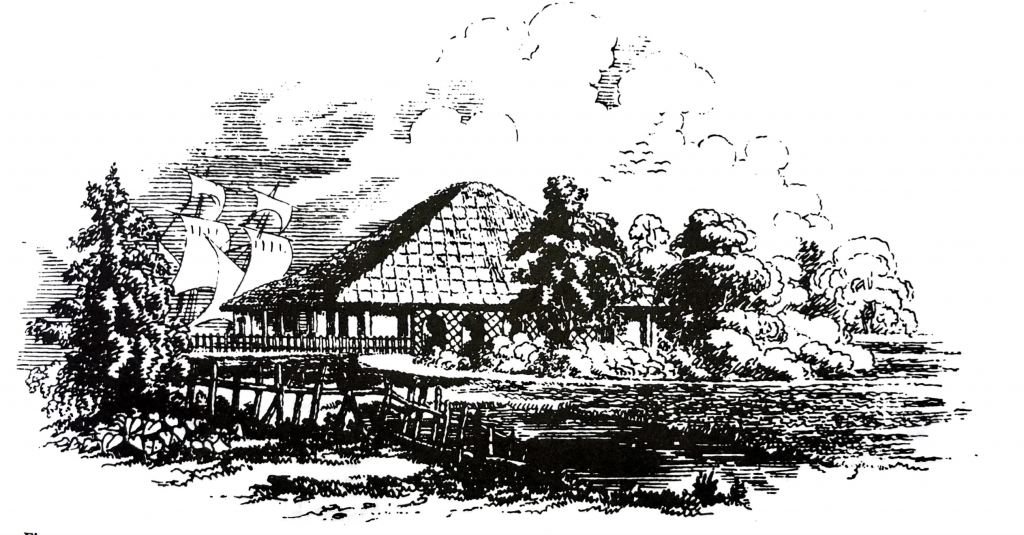
The Bungalow Form and its appeal to the English
As the East India Company, then following 1857 the British government administration, expanded their operations, the Anglo-Indian bungalow became an increasingly popular model for a European residence. Although the structure and materials improved from the traditional mud wall and thatch roof construction, the form remained more or less unchanged.9 It is curious to wonder why the British selected the practical bungalow form over a different vernacular style of grander status.
Bhardwaj and Garg assert that the bungalow was an appealing option due to its similarity to the British cottage: “such a built form was not very different from the typical English cottage, which is the most common vernacular residential dwelling unit in the English countryside.”10 The bengal hut and english cottage resemble each other both in form and scale; however, it is their shared thatched roof that would draw such a distinguishable comparison. This theory is further backed by the fact that British first adapted the bengal hut vernacular for a rural and temporary dwelling similar to the use of a countryside cottage.
This reasoning lacks backing when considering why the bungalow continued to be utilized as an increasingly permanent and urban dwelling. To understand why the bungalow remained so appealing to British residents it is important to consider its association with the surrounding compound. Traditionally the native Bengali bungalow structures were surrounded by a spacious compound, that could be as large as 20 acres, that supplied the structure with needed light and ventilation.11 This was in direct contrast to the courtyard house of the ‘native city’ whose internal courtyard provided access to both light and air. While the courtyard house activity was centripetal, the bungalow was centrifugal, outward onto the verandah and into the compound.12 This aligned itself with urban development under British authority. European areas had grown around the civil station and cantonments in which they controlled. In these provincial towns “two separate and unequal urban settlements developed; one ‘European’ and one ‘native’ city.”13 An account by a traveler in 1894 described this separate urbanity:
The European station is laid out in large rectangles formed by wide roads. The native city is an aggregate of houses perforated by tortuous paths … The Europeans live in detached houses, each surrounded by walls enclosing large gardens, lawns, out-offices. The natives live packed in squeezed-up tenements, kept from falling to pieces by mutual pressure. The handful of Europeans occupy four times the space of the city which contains tens of thousands of Hindoos and Mussulmen.14
If the british had chosen to live integrated within the city and community in which it controlled then the bungalow form would have been inappropriate. However, true to colonial ideology, the British removed themselves into their own world of idyllic pleasure, uninterrupted by the realities of the society they benefited from, in this scenario the bungalow with its vast compound and walled enclosure was entirely suitable.
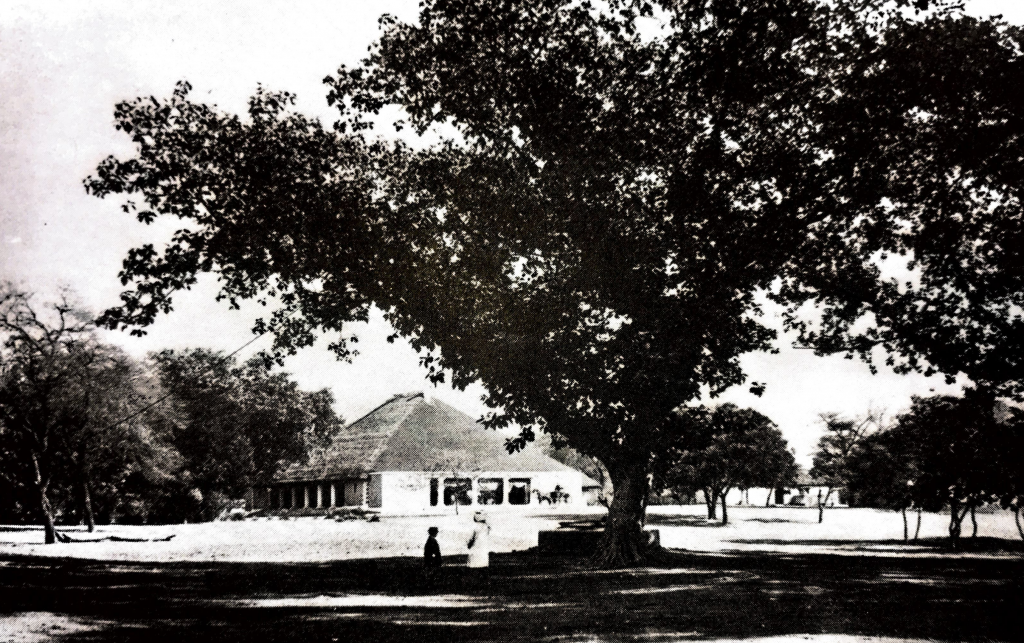
The polarization of space between the native city and the European settlement cannot be overstated. 1871, a section of New Delhi was developed based on the planning and architectural values of the British colonial power. Here a series of bungalows were built for British nationals, each on its own compound of 1 to 5 acres, sprawling over an area of 30 square miles. This is in staggering contrast to the walled area of Old Delhi, only 3 miles north, where half a million people lived within 2 1/2 square miles.15 Within this context the bungalow compound fulfills another purpose, to display the western ideal of power and wealth through land ownership. Additionally, unlike other colonial settlements, the British in India were never settlers rather they were traders and administrators.16 This meant that land encompassed within the compound served no other function but for leisure space and as a symbol of status.
Bungalow Compound and its Reliance on Labour
These vast bungalow compounds were made possible by the abundance of available cheap labour but in turn the layout of the structure and compound was equipped to seamlessly deal with staff. Corresponding with the exaggerated size of the compounds was the number of staff that would service the colonial household. It was common to take a labour force of 10-30 servants in order to deliver the English middle-class lifestyle.17 The bungalow layout was well suited in managing a large staff. In particular the encircling verandah allowed household residents a platform to constantly survey workers in the surrounding compound, reinforcing the power hierarchy. The verandah allowed a buffer between the interior and exterior of the home, allowing most interactions with staff to occur outside the home. Additionally, the veranda cleverly allowed many of the rooms to be accessed from the exterior, limiting the disturbance to residents inside. For example restrooms were typically placed along the exterior, allowing servants to seamlessly access them through the special exterior doors causing no interruption.18 Finally, the large compound allowed ample space for service areas and servants quarters to be removed from sight. Bungalow compounds had many attributes that allowed for a seamless interaction with staff which to the exploitive colonial resident, made it greatly advantageous over other forms.
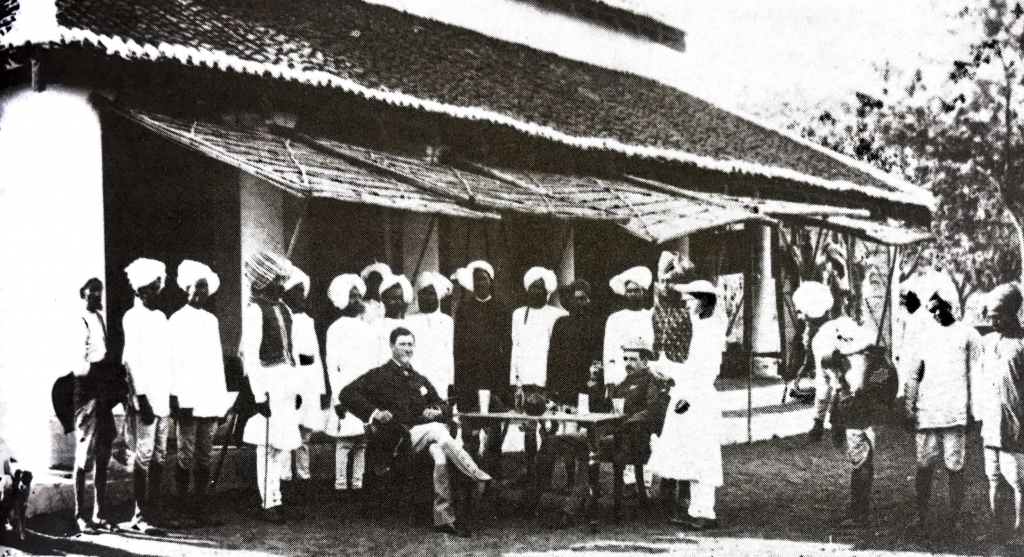
Conclusion
As imperial rule extended, the bungalow form spread throughout India, embodying a single cultural and political meaning, “to be a type of dwelling which contrasted, everywhere it was found with the regional Indian house.”19 The bungalow origins are humble, that of a native bengali hut, and the initial European attraction to the simple form may have been functional, it was inexpensive and easy to build. Perhaps it was emotional, a dwelling that resembled the architecture of the left-behind english countryside. Whatever the appeal, as the Europeans evolved the bungalow, its inherent qualities showed themselves to be especially effective at furthering the colonial ideology of wealth, power and authority. Together with the creation of separate European urban communities, the bungalow compound was utilized to deliver the utopic fantasy of the colonial resident abroad.
Notes
1 Bhardwaj and Garg, “The Bungalow – Part of India’s Vernacular Heritage,” 605.
2 Bhardwaj and Garg, “The Bungalow – Part of India’s Vernacular Heritage,” 604.
3 King, The Bungalow, 18.
4 King, The Bungalow, 18.
5 King, The Bungalow, 18.
6 “<i>Francis Buchanan,” 12.
7 King, The Bungalow, 24.
8 King, The Bungalow, 26.
9 Bhardwaj and Garg, “The Bungalow – Part of India’s Vernacular Heritage,” 604.
10 Bhardwaj and Garg, “The Bungalow – Part of India’s Vernacular Heritage,” 609.
11 King, The Bungalow, 34.
12 King, The Bungalow, 34.
13 Neild, “Colonial Urbanism,” 243.
14 King, The Bungalow, 43.
15 King, Colonial Urban Development, 128.
16 Desai, Desai, and Lang, The Bungalow in Twentieth-Century India, 27.
17 King, The Bungalow, 49.
18 Desai, Desai, and Lang, The Bungalow in Twentieth-Century India, 7.
19 King, The Bungalow, 49.
Bibliography
Bhardwaj, Monalisa, and Pushplata Garg. “The Bungalow – Part of India’s Vernacular Heritage.” International Journal of Environmental Studies 73, no. 4 (July 3, 2016): 604–15. https://doi.org/10.1080/00207233.2016.1185335.
Desai, Madhavi, Miki Desai, and Jon T. Lang. The Bungalow in Twentieth-Century India: The Cultural Expression of Changing Ways of Life and Aspirations in the Domestic Architecture of Colonial and Post-Colonial Society. Ashgate Studies in Architecture Series. Farnham, Surrey, England ; Burlington, VT: Ashgate, 2012.
“Francis Buchanan: An Account of the District of Purnea in 1809-10. Francis Buchanan.” American Journal of Sociology 36, no. 5 (March 1931): 855–855. https://doi.org/10.1086/215571.
King, Anthony D. Colonial Urban Development: Culture, Social Power and Environment. Repr., 1st Pbk.-Ed. London: Routledge, 1976.
———. The Bungalow: The Production of a Global Culture. London ; Boston: Routledge & Kegan Paul, 1984.
Neild, Susan M. “Colonial Urbanism: The Development of Madras City in the Eighteenth and Nineteenth Centuries.” Modern Asian Studies 13, no. 2 (April 1979): 217–46. https://doi.org/10.1017/S0026749X00008301.
